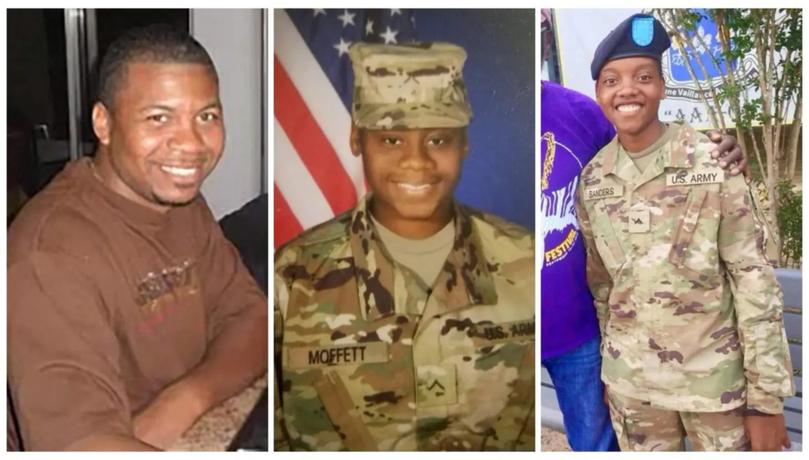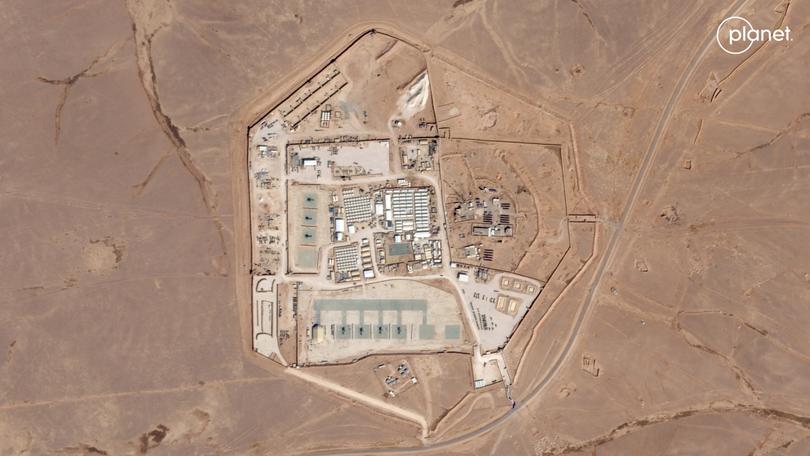The New York Times: Mix-Up preceded deadly drone strike in Jordan, U.S. officials say

Air defenses failed to stop an attack on a U.S. military outpost in Jordan on Sunday that killed three U.S. soldiers at least in part because the hostile drone approached its target at the same time a U.S. drone was returning to the base, two U.S. officials said Monday.
The enemy drone was mistaken for a U.S. surveillance drone returning to the remote resupply base, and air defenses were not immediately engaged, according to the officials, who spoke on the condition of anonymity to discuss preliminary findings of a major cause of the episode. Two other drones that attacked other locations nearby in southeast Syria were shot down, they added.
The Wall Street Journal earlier reported the drone mix-up, now at the heart of an investigation by the military’s Central Command into the deadly attack that has drawn vows of retaliation from President Joe Biden, raised doubts about American military defenses in the Middle East, and begged anew questions about the administration’s efforts to deter attacks by Iran-backed militias against merchant vessels, warships and military bases in the region.
Sign up to The Nightly's newsletters.
Get the first look at the digital newspaper, curated daily stories and breaking headlines delivered to your inbox.
By continuing you agree to our Terms and Privacy Policy.Sunday’s attack killed three U.S. Army Reserve soldiers, the first known U.S. military fatalities from hostile fire in the turmoil spilling over from the Israel-Hamas war. The Pentagon on Monday raised the injured toll to at least 40, with a warning that the list would probably grow as additional troops come forward with symptoms of brain trauma from the blast.
Biden administration officials blamed a drone launched by an Iran-backed militia from Iraq, and suspicions at the Pentagon immediately fell on Kataib Hezbollah, an Iran-affiliated group in Iraq. “It has the footprints of Kataib Hezbollah,” Sabrina Singh, a Pentagon spokesperson, told reporters, noting that intelligence analysts were still assessing the strike.

The Pentagon on Monday identified the dead soldiers as Sgt. William Jerome Rivers, 46, of Carrollton, Georgia; Spec. Kennedy Ladon Sanders, 24, of Waycross, Georgia; and Spec. Breonna Alexsondria Moffett, 23, of Savannah, Georgia. The three were assigned to the 718th Engineer Company, 926th Engineer Battalion, 926th Engineer Brigade, an Army Reserve unit based in Fort Moore, Georgia.
The drone strike on Tower 22, an outpost in northeast Jordan near its borders with Syria and Iraq, escalated hostilities in the region that have been mounting since the Oct. 7 Hamas attack on Israel and the subsequent war in the Gaza Strip.
Biden has vowed to retaliate, and he met for a second straight day Monday with his senior national security aides to discuss possible targets in Syria, Iraq and Iran. Senior U.S. officials said attacking Iran directly was less likely, although the U.S. military has drawn up plans to strike Iranian military advisers and trainers in Iraq and Syria in the event that U.S. troops were killed by Iran-backed militias in the Middle East.
Defense Secretary Lloyd Austin on Monday — his first day back to work at the Pentagon since his surgery last month for prostate cancer — condemned the attacks and vowed retribution.
“Let me start with my outrage and sorrow for the deaths of three brave U.S. troops in Jordan and for the other troops who were wounded,” Austin said before meeting with NATO Secretary-General Jens Stoltenberg. “The president and I will not tolerate attacks on U.S. forces, and we will take all necessary actions to defend the U.S. and our troops.”
The drone strike in Jordan underscored that the Iran-backed militias — whether in Iran or Syria, or the Houthis in Yemen — remained capable of inflicting serious consequences on U.S. troops despite the U.S. military’s efforts to weaken them and avoid tumbling into a wider conflict, possibly with Iran itself.
U.S. troops in Iraq and Syria, and now Jordan, have come under attack at least 165 times since October — 66 times in Iraq, 98 times in Syria and Sunday’s attack in Jordan, the Pentagon said Monday. More than 80 service members had suffered injuries, including brain trauma, before the latest salvo.
“We know that Iran supports these groups,” John Kirby, a National Security Council spokesperson, said Monday. “We know they resource them, we know they train them. We know that they’re certainly not discouraging these attacks.”

But Kirby added, “The degree to which they order and direct is something that intelligence analysts will look at.”
Pressed repeatedly at briefings with reporters Monday about when and how the United States would respond, Kirby and Singh declined to comment on specific options. They emphasized that the administration was seeking to avert a wider war in the region, even as they blamed the attack for escalating tensions.
“We’re not looking for a war with Iran,” Kirby said. “But the attacks have to stop.”
Secretary of State Antony Blinken said Monday that he would not “telegraph” any potential U.S. response but that such action “could be multileveled, come in stages — and be sustained over time.”
Blinken added: “This is an incredibly volatile time in the Middle East. I would argue that we have not seen a situation as dangerous as the one we’re facing now across the region since at least 1973, and arguably even before that.”
For its part, Iran on Monday denied any link to the attack and blamed the U.S. for igniting tensions in the region.
About 350 Army and Air Force personnel are deployed to the Tower 22 border outpost. It serves as a logistics and resupply hub for the al-Tanf garrison nearby in southeastern Syria, where U.S. troops work with local Syrian partners to fight remnants of the Islamic State group.
The one-way attack drone hit near the outpost’s living quarters, causing injuries that ranged from minor cuts to brain trauma, a U.S. military official said. Eight U.S. service members were flown to Iraq for medical care, and three of those were expected to be flown to Germany for even more advanced treatment, Singh said.
The soldiers and airmen were living in containerized housing units, or CHUs, Singh said, essentially aluminum boxes a little bigger than a commercial shipping container. They have linoleum floors and cots or beds inside, and can be easily transported on trucks.
“What was different about this attack is where it landed,” Singh said. “It was pretty early in the morning, so people were actually in their beds when the drone impacted.”
This article originally appeared in The New York Times.
© 2024 The New York Times Company
Originally published on The New York Times
